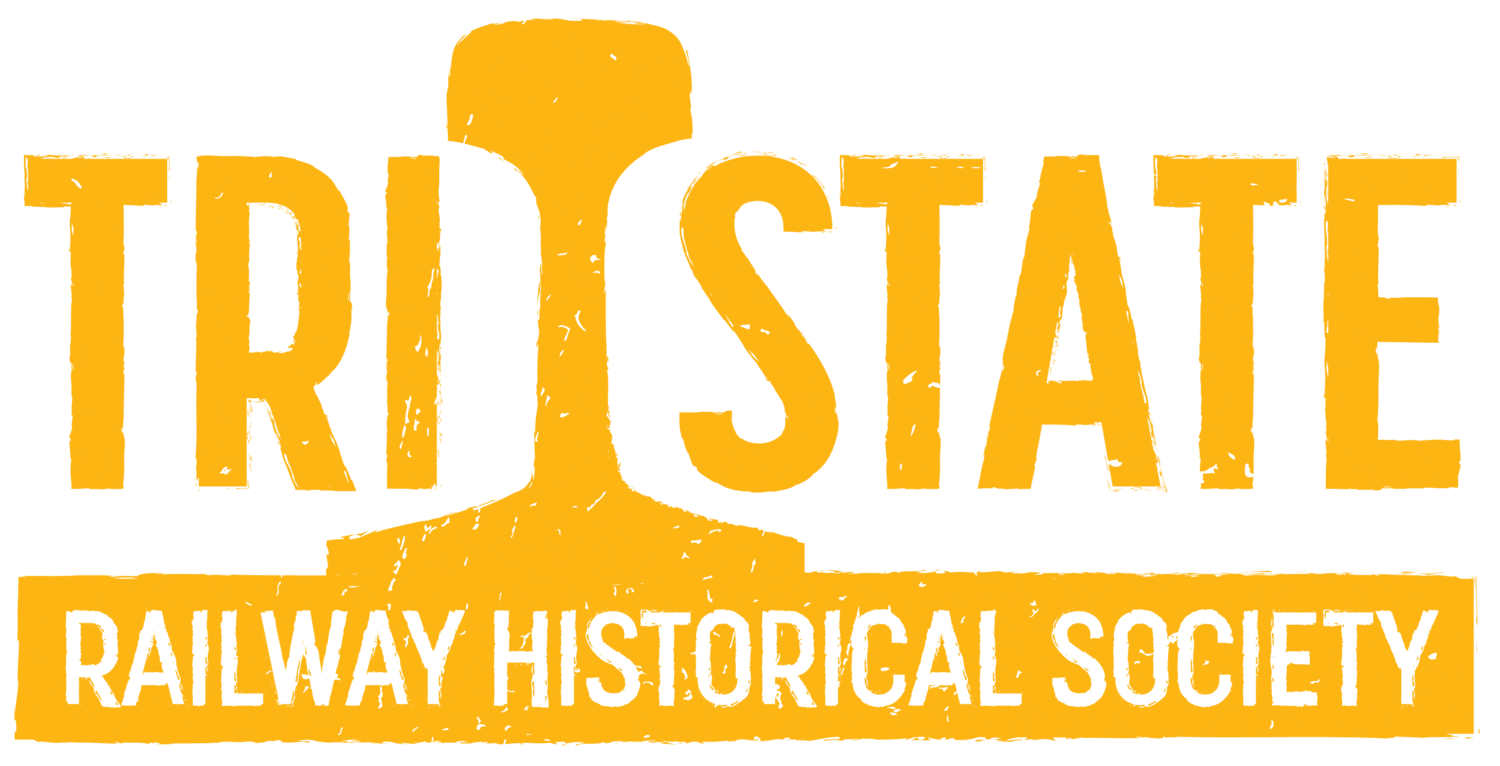Rahway valley railroad
general electric 70-TON LOCOMOTIVE #16
Rahway Valley Railroad 70-ton No. 16 is one of Tri-State’s latest acquisitions. The locomotive is presently housed at the United Railroad Historical Society of NJ yard in Boonton, NJ. Tri-State’s No. 16 is indicative of the transition from steam to diesel power on short-line railroads.
The locomotive was constructed in January of 1951 (C/N 30838) by General Electric (GE) at their plant in Erie, PA. GE’s early foray into the diesel-electric locomotive market was for low-weight, low-output switcher types. After several years of experimentation, GE introduced a line of standard switcher models in 1940. The two most popular types purchased by North American railroads were the 44-ton center-cab and the 70-ton end-cab models. The “70-tonner” was designed for branch line work. The design permitted fast operation on very light track. The model was acquired by both Class I and short-line railroads where they replaced lightweight steam locomotives. The 70-tonner was powered by a single six-cylinder Cooper-Bessemer FWL-6T diesel engine. GE manufactured 238 of these models between 1947 and 1955.
The locomotive was delivered to the Rahway Valley Railroad (RV), at its interchange with the Delaware, Lackawanna, & Western Railroad in Summit, NJ, on January 29, 1951. The RV was an 11.8-mile long short-line that operated primarily in Union County, NJ. The RV hauled a diverse array of freight, including cement, coal, lumber, pharmaceuticals, and steel, and operated passenger service until 1919. The railroad’s Board of Directors, mainly consisting of heirs of the railroad’s founder, became interested in diesel power towards the end of the 1940s. The railroad operated three 2-8-0 “Consolidation”-type locomotives and rotated each in service on a monthly basis. The RV operated through an increasingly dense swath of suburbia. Residents, whose homes abutted the tracks, often complained of the soot spewing steam locomotives. The railroad’s President and General Manager of nearly forty years, George A. Clark, had a love for steam and was reluctant to see the old locomotives go. However, Clark was like a child with a new toy when No. 16 arrived.
No. 16 was delivered in red and yellow colors, in the standard GE “bow-wave” scheme. The locomotive was turned over to the train crew several weeks after its delivery. The locomotive soon proved itself adept to the RV’s steep grades, tight curves, and light track. The RV’s last active steam locomotive, No. 15, was retired in 1953. No. 15 can now be seen on display at the Steamtown National Historic Site in Scranton, PA. No. 16 was joined by a second 70-tonner, No. 17, in 1954. The pair, in their contrasting red and green colors, served admirably on the RV for over thirty years.
Delaware Otsego Corporation, the corporate parent of the New York, Susquehanna, & Western Railway, acquired the RV in 1986. Nos. 16 and 17 were soon removed from the property in favor of EMD power. The locomotives were relocated to other portions of the Delaware Otsego System. The RV was abandoned in 1992. In 1995, the pair was donated to the United Railroad Historical Society of NJ (URHS) for preservation purposes. The URHS stored both locomotives in several locations before placing them on loan to the Whippany Railway Museum in Whippany, NJ in the early 2000s. The museum cosmetically restored and displayed Nos. 16 and 17 for several years. In 2016, the Morristown & Erie Railway entered into a car storage agreement and requested that all surplus equipment be removed from the property. The URHS arranged to have both locomotives, along with an old wrecking crane and idler car, moved to its yard in Boonton, NJ in April 2017. Unfortunately, No. 16 developed hot journals and could not complete the move. The locomotive suffers from four badly scored axles which prevent it from moving any sizable distance.
After culling resources and funds to repair the locomotive’s axles, Tri-State formally approached URHS to formally acquire ownership of No. 16 in November 2017. The URHS gifted the No. 16 to Tri-State, in January 2018, in order to better facilitate the locomotive’s continued preservation. Under Tri-State’s care, the locomotive will be moved to Boonton, NJ after repairs are completed, and is slated to receive a professional evaluation for a possible return to operation.
No. 16 is pictured in Kenilworth, NJ, the site of the RV's headquarters, on January 30, 1951. The one-stall engine house seen in front of the locomotive was constructed specifically to house the RV's first diesel. (William S. Young photo, Richard J. King collection)
No. 16 is seen at Roselle Park, the RV's interchange with the Lehigh Valley Railroad, on November 21, 1968. (Bob Wilt photo)
No. 16 trundles through Kenilworth on July 21, 1977 as Al Brooks drops off the engine to flag Faitoute Ave. Nos. 16 and 17 were repainted in 1976 into a matching Cornell red and white scheme. (Walter A. Appel photo)
No. 16 was repainted in 2014 by volunteers at the Whippany Railway Museum. (Richard J. King photo)
No. 16 on display at the Whippany Railway Museum in late-2014. (Richard J. King photo)
PLEASE DONATE HERE!
Your gracious contributions will get No. 16 restored! Any amount helps, big or small!

